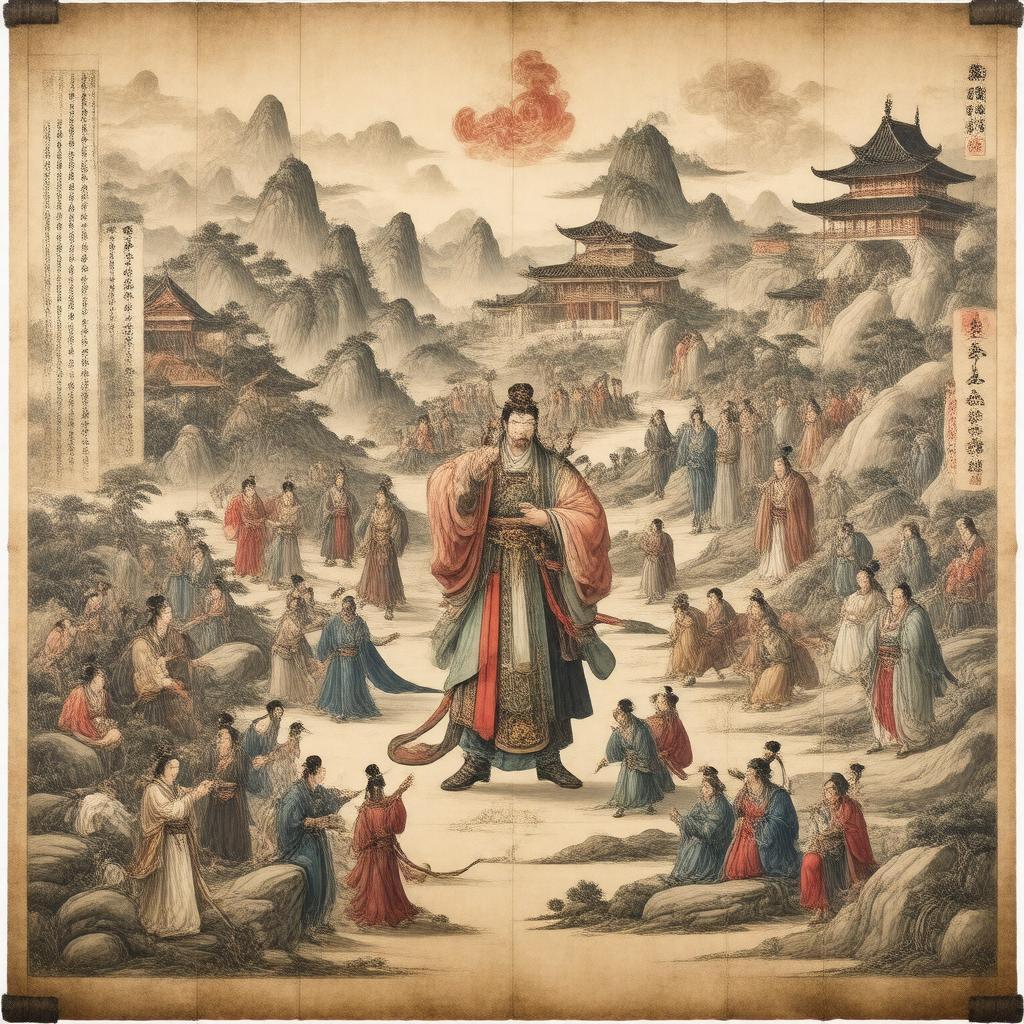Prompt
"Create an image of an ancient, ornate scroll with 30 volumes, written in Classical Chinese, depicting scenes of Japanese mythology and history from the Age of the Gods to 697 AD, with intricate illustrations of gods, emperors, and historical events, set against a backdrop of traditional Japanese architecture, symbolizing the significance of Nihon Shoki, the Chronicles of Japan, as a foundational text of Japanese history and folklore."

